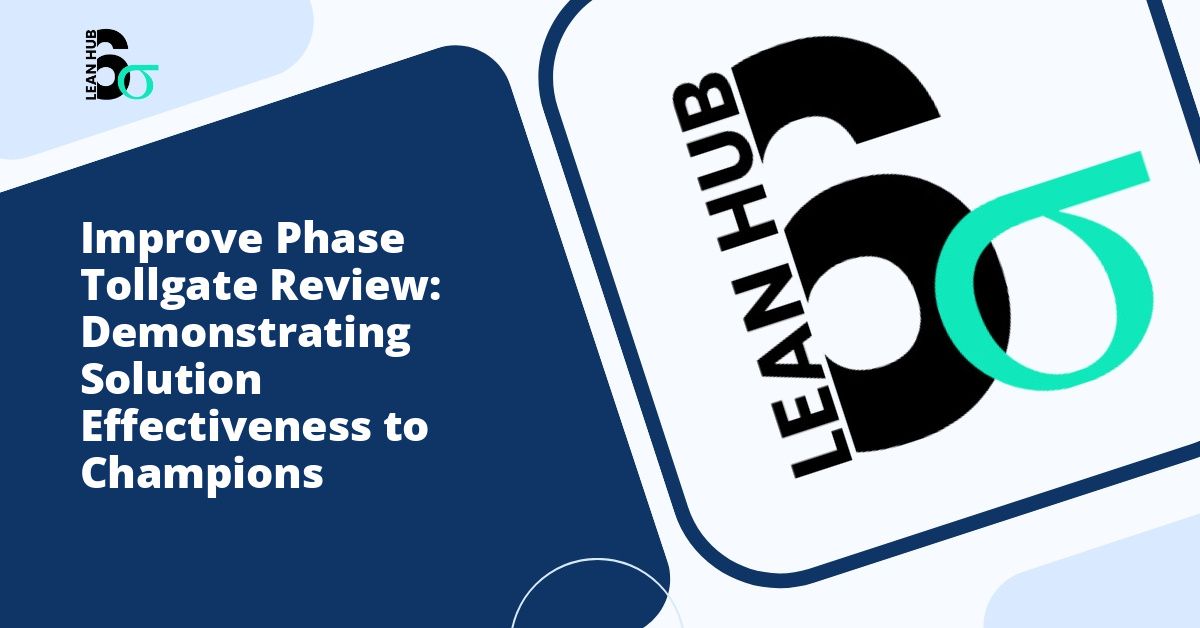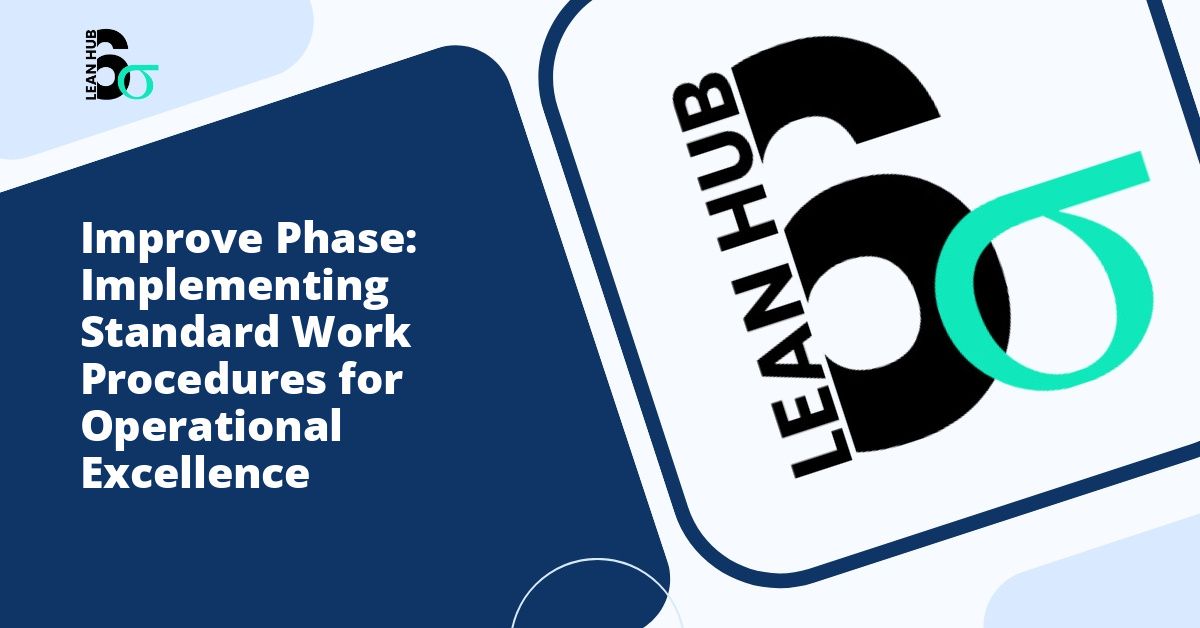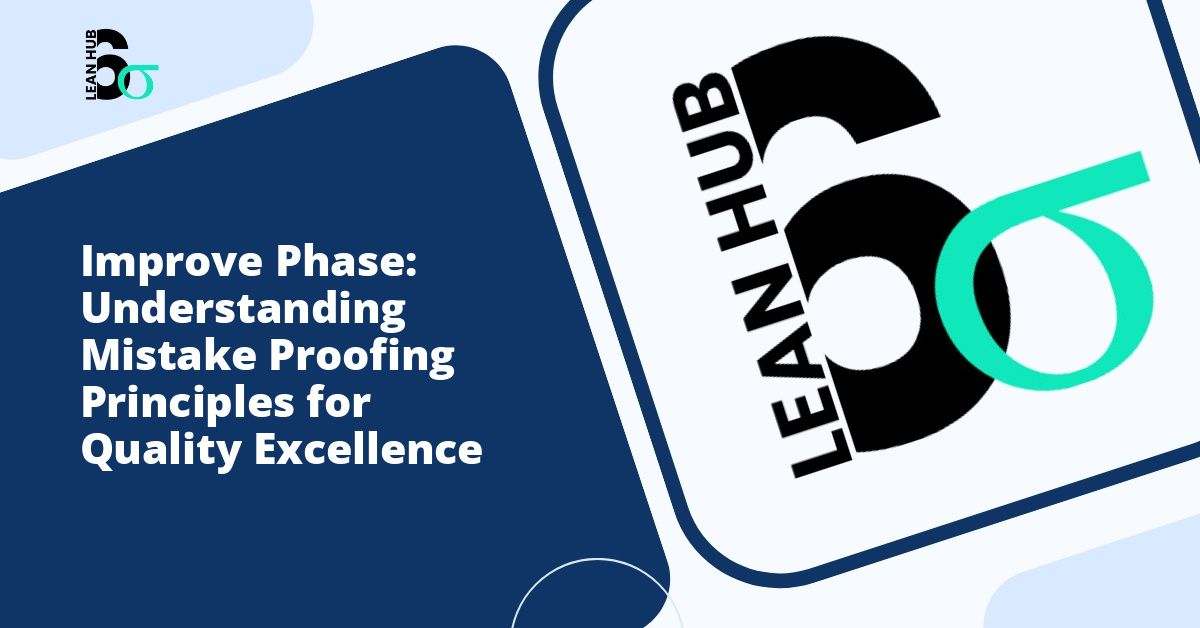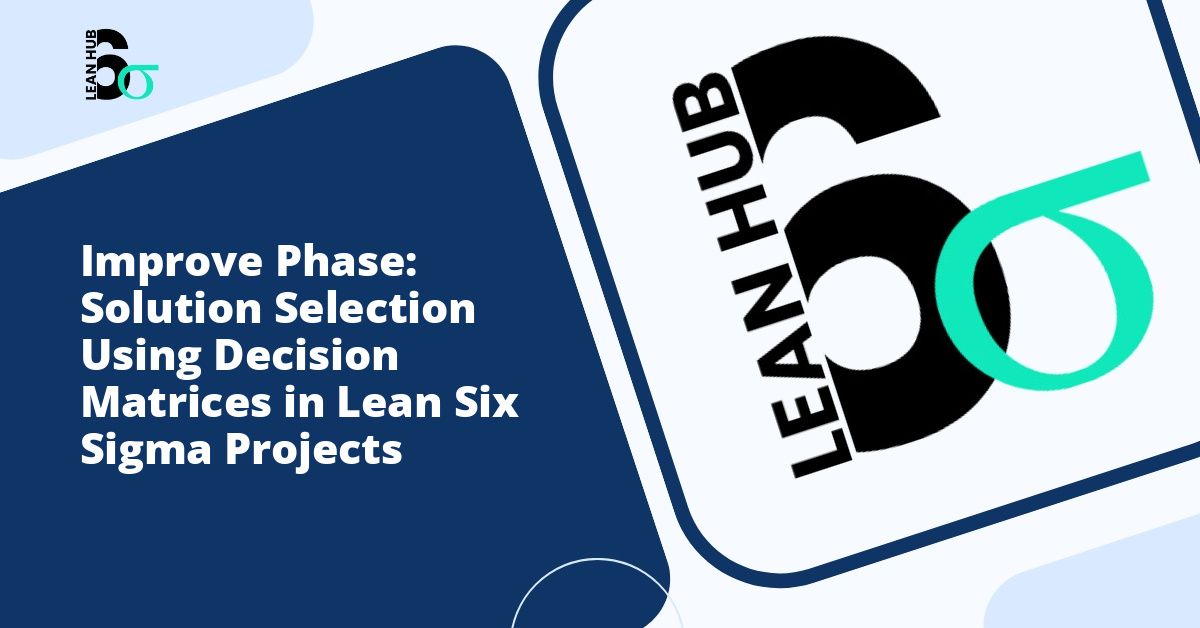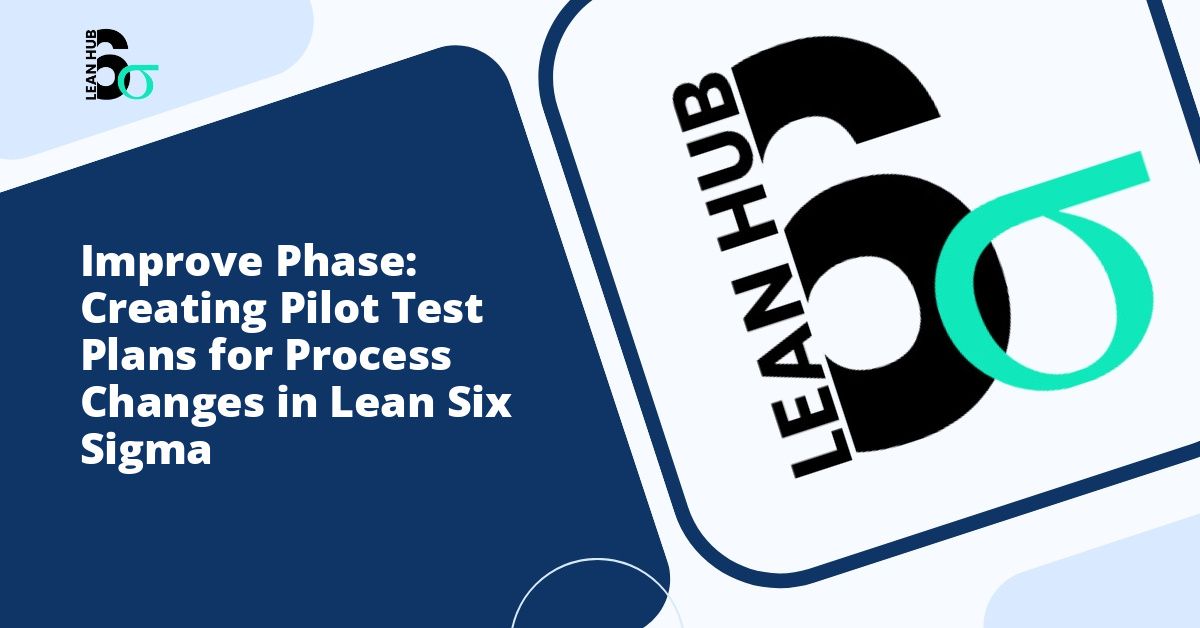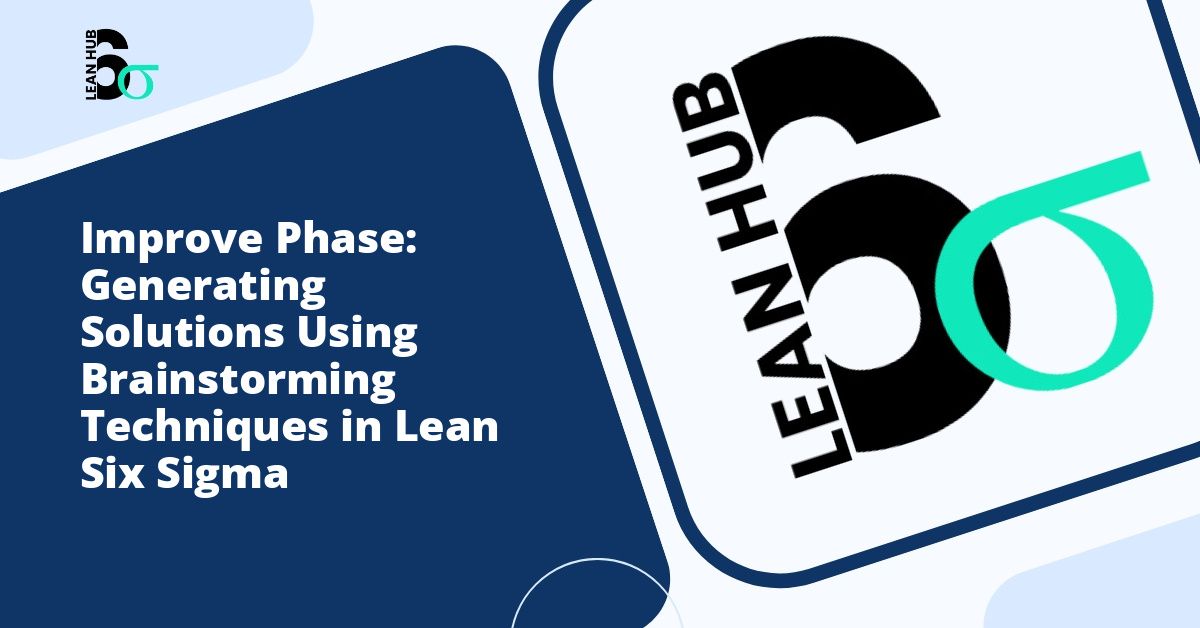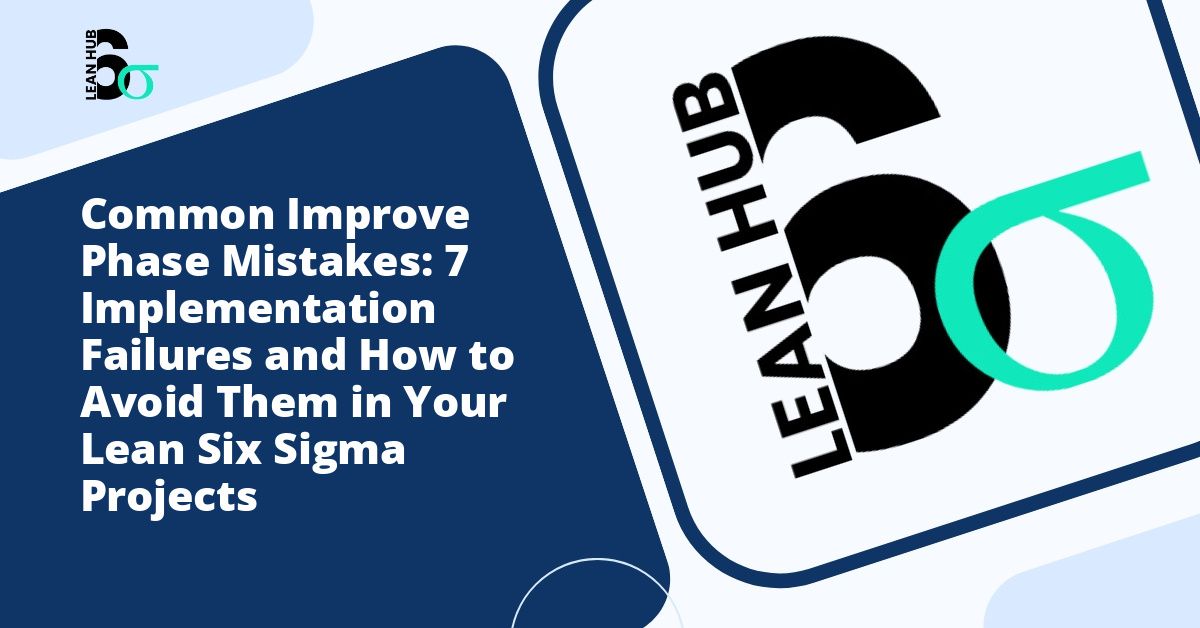The Improve phase represents a critical juncture in any Lean Six Sigma project, where theoretical solutions transition into tangible improvements. Successfully navigating the Improve phase tollgate review requires more than just implementing changes; it demands a comprehensive demonstration of solution effectiveness that convinces project champions and stakeholders of the value created. This article explores the essential elements of conducting a successful Improve phase tollgate review and presents strategies for effectively communicating results to decision-makers.
Understanding the Improve Phase in Lean Six Sigma
The Improve phase follows the Analyze phase and focuses on implementing solutions that address root causes identified during earlier project stages. During this phase, project teams develop, pilot, and validate potential solutions before full-scale implementation. The tollgate review at the end of this phase serves as a checkpoint to ensure that proposed solutions deliver measurable improvements and align with organizational objectives. You might also enjoy reading about Quick Wins vs. Long-Term Solutions: Balancing Immediate and Lasting Improvements for Sustainable Success.
Unlike previous phases that emphasize data collection and analysis, the Improve phase requires teams to demonstrate concrete results. Champions and stakeholders expect to see evidence that implemented solutions reduce defects, streamline processes, or generate cost savings. The tollgate review provides the forum for presenting this evidence and securing approval to move forward with project closure. You might also enjoy reading about How to Conduct a DOE Study: Step-by-Step Guide for Six Sigma Projects.
Key Components of an Effective Improve Phase Tollgate Review
Documenting Baseline Performance Metrics
Before presenting improvements, teams must establish clear baseline measurements that illustrate the problem’s original state. These baseline metrics, collected during the Measure phase, provide the comparison point for demonstrating improvement. Effective presentations juxtapose baseline data with current performance metrics, creating a compelling before-and-after narrative that highlights the magnitude of change achieved. You might also enjoy reading about Lean Six Sigma Improve Phase: The Complete Guide for 2025.
Champions need to recognize phase progress through quantifiable measurements rather than subjective assessments. Present baseline data using consistent measurement methods and timeframes to ensure accurate comparisons. Include statistical confidence intervals and sample sizes to demonstrate the reliability of your measurements.
Presenting Solution Implementation Details
Stakeholders require transparency regarding how solutions were implemented and what resources were consumed. Comprehensive documentation should include:
- Detailed descriptions of implemented solutions and their underlying rationale
- Implementation timelines showing key milestones and completion dates
- Resource allocation including personnel, budget, and equipment
- Pilot testing results and any adjustments made based on feedback
- Risk mitigation strategies employed during implementation
This documentation demonstrates thorough planning and execution while providing champions with the information needed to understand the investment required for generating results.
Demonstrating Statistical Validation
Lean Six Sigma methodology demands rigorous statistical validation of improvements. The tollgate review should present statistical evidence that observed improvements are significant and not merely random variation. Utilize appropriate statistical tests such as hypothesis testing, control charts, or capability analysis to validate that process changes have produced genuine improvements.
Present statistical findings in accessible formats that non-technical stakeholders can understand. While maintaining statistical rigor, translate technical findings into business language that emphasizes practical significance alongside statistical significance.
Creating Compelling Visualizations for Champions
Champions and executive stakeholders often have limited time to review detailed project information. Effective visualizations transform complex data into easily digestible insights that facilitate quick decision-making. Consider incorporating these visualization strategies:
Before and After Comparisons
Side-by-side comparisons using bar charts, line graphs, or process maps clearly illustrate the impact of implemented solutions. These visualizations should highlight key performance indicators that matter most to organizational leadership, such as cycle time reduction, defect rate improvements, or cost savings.
Financial Impact Summaries
Translate process improvements into financial terms that resonate with business leaders. Create clear financial summaries showing implementation costs, ongoing operational savings, payback periods, and projected return on investment. Champions need to recognize phase value through concrete financial metrics that justify the resources invested in the project.
Process Capability Analysis
Demonstrate how improvements have enhanced process capability by comparing capability indices (Cp, Cpk) before and after implementation. Visual representations of capability analysis show stakeholders how well the improved process meets specifications and reduces variation.
Addressing Sustainability and Control Plans
Champions want assurance that improvements will persist beyond project completion. The Improve phase tollgate review should present comprehensive control plans that outline how gains will be maintained. Effective control plans include:
- Ongoing monitoring procedures and measurement frequency
- Responsible parties assigned to monitor performance
- Response plans for when performance deviates from targets
- Documentation updates including standard operating procedures
- Training plans for personnel affected by process changes
Demonstrating forethought regarding sustainability addresses a common concern among champions who have witnessed previous improvement initiatives fail due to inadequate follow-through.
Handling Challenges and Partial Solutions
Not all improvement initiatives proceed exactly as planned. Some solutions may deliver partial results, require additional refinement, or encounter unexpected obstacles. Transparency about challenges builds credibility with champions and stakeholders.
When presenting less-than-perfect results, focus on lessons learned and proposed adjustments. Explain what was discovered during implementation that necessitated changes to the original approach. Champions appreciate honest assessments that demonstrate learning and adaptability rather than defensive posturing about shortfalls.
Preparing for Champion Questions and Concerns
Anticipating potential questions and concerns demonstrates thorough preparation and builds champion confidence. Common areas of inquiry include:
- Scalability of solutions to other areas or facilities
- Potential unintended consequences or negative impacts on related processes
- Resource requirements for sustaining improvements
- Alignment with strategic initiatives and organizational priorities
- Timeline for realizing full benefits from implemented solutions
Prepare data-driven responses to these anticipated questions, including supporting documentation that can be referenced during discussions. This preparation enables confident, credible responses that reinforce champion trust in project outcomes.
Connecting Improvements to Strategic Objectives
Champions need to see how project improvements contribute to broader organizational goals. Explicitly connect demonstrated improvements to strategic objectives such as customer satisfaction targets, market competitiveness, regulatory compliance, or operational excellence initiatives.
This strategic alignment helps champions recognize phase achievements within the larger context of organizational priorities. When improvements clearly support strategic goals, champions become advocates who promote project success throughout the organization.
Best Practices for Tollgate Review Presentations
The delivery method significantly impacts how effectively information is received. Consider these presentation best practices:
- Structure presentations logically, moving from problem statement through analysis to implemented solutions and results
- Limit slides to essential information, avoiding data overload
- Practice delivery to ensure smooth presentation within allocated timeframes
- Prepare backup documentation for detailed questions without cluttering main presentations
- Engage champions through interactive elements rather than passive information delivery
- Schedule adequate time for discussion and questions
Conclusion
The Improve phase tollgate review represents a pivotal moment in Lean Six Sigma projects where teams must convincingly demonstrate solution effectiveness to champions and stakeholders. Success requires comprehensive documentation, rigorous statistical validation, compelling visualizations, and clear communication of both results and sustainability plans.
By focusing on measurable improvements, transparent reporting of challenges, and explicit connections to strategic objectives, project teams can secure champion support for project completion and build organizational confidence in continuous improvement methodologies. The effort invested in thorough tollgate preparation pays dividends through enhanced credibility, stronger stakeholder relationships, and increased likelihood of solution sustainability.
Remember that champions need to recognize phase value through concrete evidence and clear communication. When teams effectively demonstrate solution effectiveness, they not only advance their current projects but also strengthen organizational commitment to data-driven improvement initiatives that generate lasting business value.

